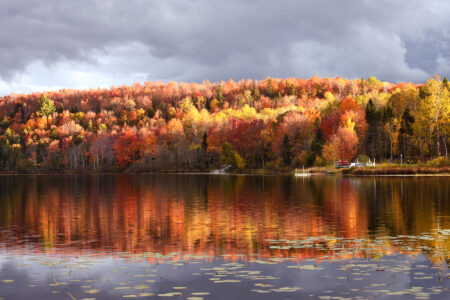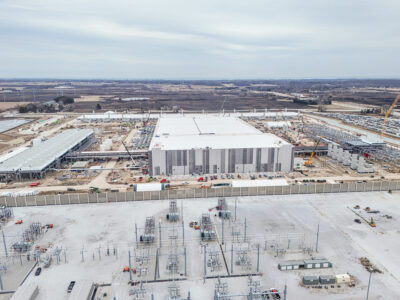Peak colors expected in early October; forecast slightly favors a warmer fall

The view last fall at Six Mile Lake in northern Dickinson County. Fall foliage in the region is expected to reach peak this year the first or second week of October. (Betsy Bloom/Daily News photo)
IRON MOUNTAIN — Fall colors may emerge in the Upper Peninsula about a week from now and peak by the first or second week of October, according to fall foliage forecasts.
SmokyMountains.com’s interactive map predicts partial colors in the southern U.P. and northern Wisconsin by Sept. 22, and near peak at the end of the month.
Nighttime temperatures in the 30s help prompt the color display. That becomes the norm at Iron Mountain-Kingsford in late September, although shorter days will bring on a change regardless.
“A late frost and mild fall temperatures bode for a more demure display but still spectacular,” says Bill Cook, a retired Michigan State University Extension forester and biologist.
The National Weather Service slightly favors above-average temperatures in the U.P. for the three-month period through November. The precipitation outlook is neutral.
Temperatures at Iron Mountain-Kingsford in August averaged 66.8 degrees, which was one-tenth of a degree above normal. The highest reading at the Iron Mountain-Kingsford Wastewater Treatment Plant observation site was 89 degrees on Aug. 7. The lowest was 40 degrees on Aug. 28.
Overall, it was a moderately warm meterological summer. Temperatures in July averaged 70.5 degrees at Iron Mountain-Kingsford, which was 2 degrees above normal. June temperatures average 65.6 degrees, which was 1.6 degrees above the norm.
Rainfall in August measured 3.87 inches at the treatment plant, about a half-inch above average. July rainfall was 4 inches, also about a half-inch above average. June brought 6.33 inches of rain, nearly 2 1/2 inches above average.
A few bordering counties are nonetheless on the edge of drought. Conditions in southern Iron County are abnormally dry, according to the U.S. Drought Monitor. It’s the same for northern Florence and Forest counties in Wisconsin.
Otherwise, the U.P. and northern Wisconsin are largely free of drought concerns. The winter outlook for the region is neutral on temperatures and precipitation, apart from slightly favoring above-normal precipitation in the eastern half of the U.P. from late fall into early winter.
Ocean conditions that could be an indicator for the type of winter ahead seem unremarkable.
“The chances of El Nino are very small through early spring 2026,” said NWS forecaster Johnna Infanti.
El Nino, which is marked by warmer-than-normal waters in the central and eastern Pacific Ocean, is linked to milder winters in the Great Lakes region. El Nino’s cooler flipside, La Nina, is favored for early winter, but a return to neutral conditions is expected for late winter and early spring, Infanti said.
———
Jim Anderson can be reached at 906-774-2772, ext. 85226, or janderson@ironmountaindailynews.com.





